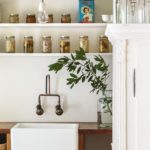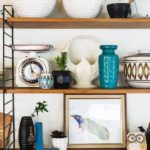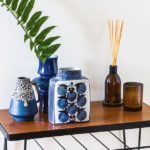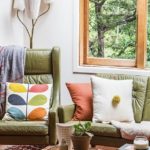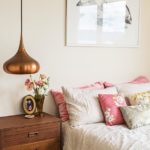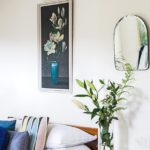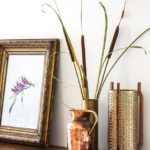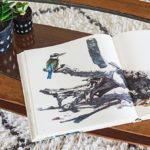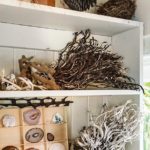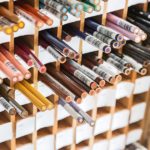Niels Meyer-Westfeld and Deborah Sweeney’s design for life
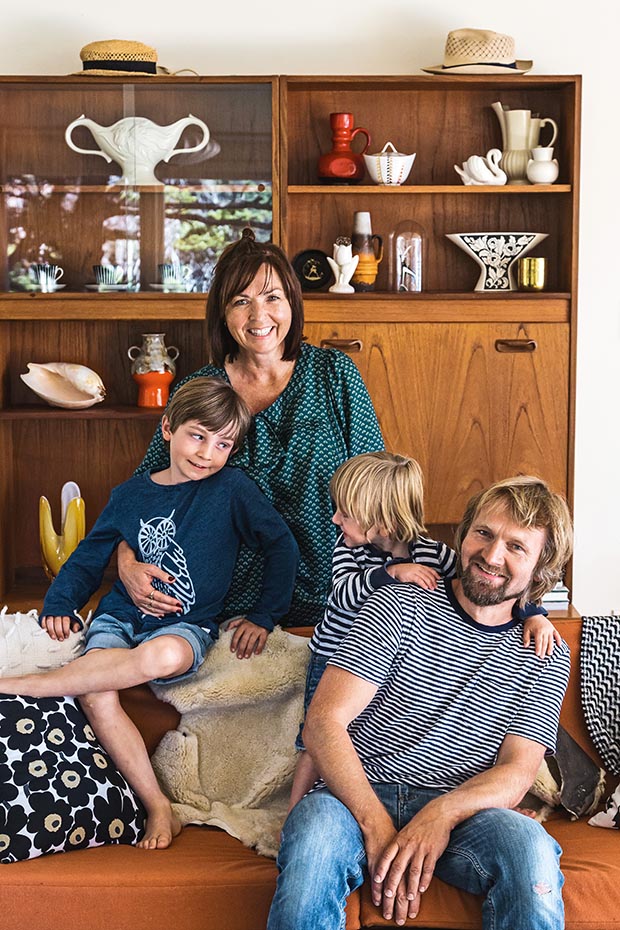
Native birds and high fashion might be odd bedfellows but not in the hillside home of a German expat and A New Zealand designer
Words: Sharon Stephenson Photos: Paul Mccredie
Few things please Niels Meyer-Westfeld more than native birds. Throw in a sketch pad and a few spare hours and that’s what is called a winning trifecta.
So passionate, in fact, is the German-born artist about New Zealand’s feathered creatures, he has turned them into a career. Niels’ first book, Land of Birds: An Illustrated Tribute to the Birds of New Zealand (Potton & Burton Publishing), features 120 meticulously hand-drawn images of 45 birds, including the kaka and albatross as well as little blue penguins, which Niels roamed the country to sketch. There’s another book in the wings, along with several exhibitions, but we’ll get to those later.
- The laundry bench top was made from recycled rimu by Niels, the preserves were made by Deborah from apples and pears grown in their garden.
- Most of the couple’s German pottery was picked up while on trips to visit Niels’ family in Germany.
- Most of the couple’s German pottery was picked up while on trips to visit Niels’ family in Germany.
- Stretched over two floors, the house is much like its owners: smart, stylish and eminently practical.
- The pendant beside the bed dates from 1957 and was found in a flea market in Copenhagen.
- The large wooden sideboard was bought from a retro store in Wellington and is filled with Deborah’s various flea-market and charity-store finds.
- The botanical print was drawn by Niels who found the perfect gold frame at a market not far from his hometown.
The view from the cable car to the hillside home Niels shares with his wife, fashion designer Deborah Sweeney, and their sons Lars (7) and Romeo (3) is of Eastbourne in summer. But the vertiginous journey, no friend to high heels, is worth it: the kettle is on, the cupcakes are baked and there are Instagrammable views across the blue expanse of Wellington Harbour. It’s the third house the creative couple has owned since returning from Britain in 2002.
“We used to drive out from Wellington at weekends to go tramping and loved being here, surrounded by the bush,” says Deborah.
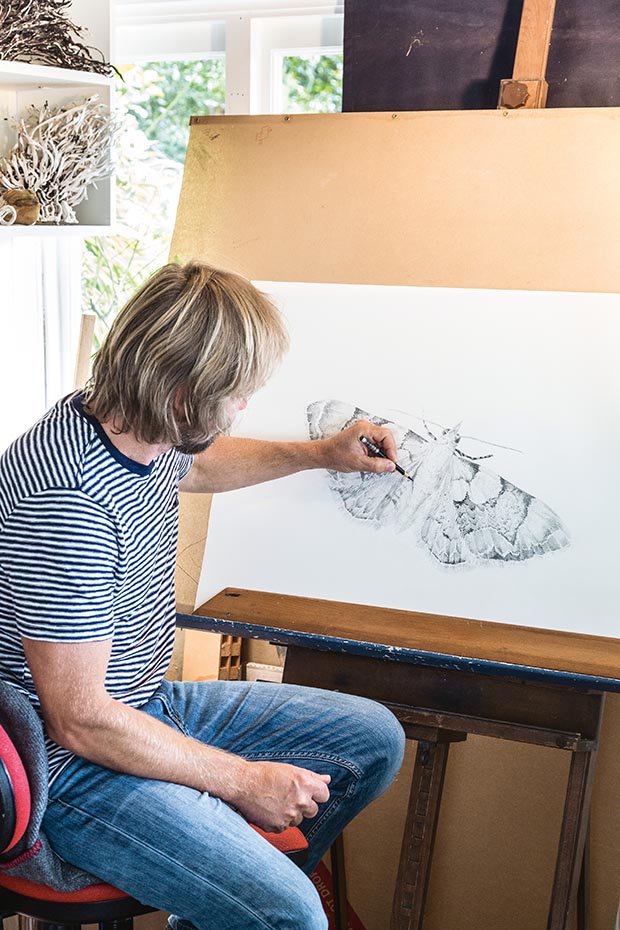
The work in progress on his easel is a moth, Chloroclystis ichenodes.
At the time, her workroom was in nearby Seaview so it made sense to move to this side of the harbour. But with the arrival of Romeo, their previous home a couple of bays over, proved too much of a squeeze. Three years ago they found this 290-square-metre house, previously home to a family of seven.
Stretched over two floors, the house is much like its owners: smart, stylish and eminently practical. It also has oodles of space, allowing Deborah to move her label’s headquarters into a downstairs bedroom and for Niels to work from a Post-It Note-sized cottage, which anchors one corner of the property.
“The cottage is believed to have been one of the first buildings in Days Bay,” says Deborah. “It used to be a tearoom and people would climb up the hill to have a cuppa and a scone. I was told about a local, an elderly woman, who got engaged on the deck out front.”
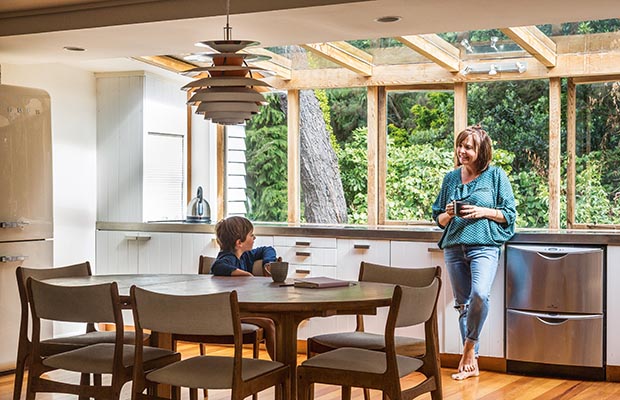
The pendant light over the dining table is by Poul Henningsen and was bought in an antique store in Copenhagen.
Today the cottage appears much as it would have back then – a simple wood-paneled dwelling with postcard-pretty views. Inside, Niels’ drawing board features a work in progress, a large pencil sketch of a moth, which will eventually get the coloured pencil treatment. There’s a cabinet of animal skulls, stacks of ornithology books and a cupboard lined with rows and rows of neatly labeled plastic containers containing feathers, used to precisely colour-match the birds.
“I’m incredibly organized and tidy,” laughs Niels. “Blame that on my German efficiency.”
He can’t quite remember when he was first bewitched by nature but as a boy growing up in Neuenhaus, a small town close to the border of northern Germany and the Netherlands, Niels often accompanied his father on botanical trips.
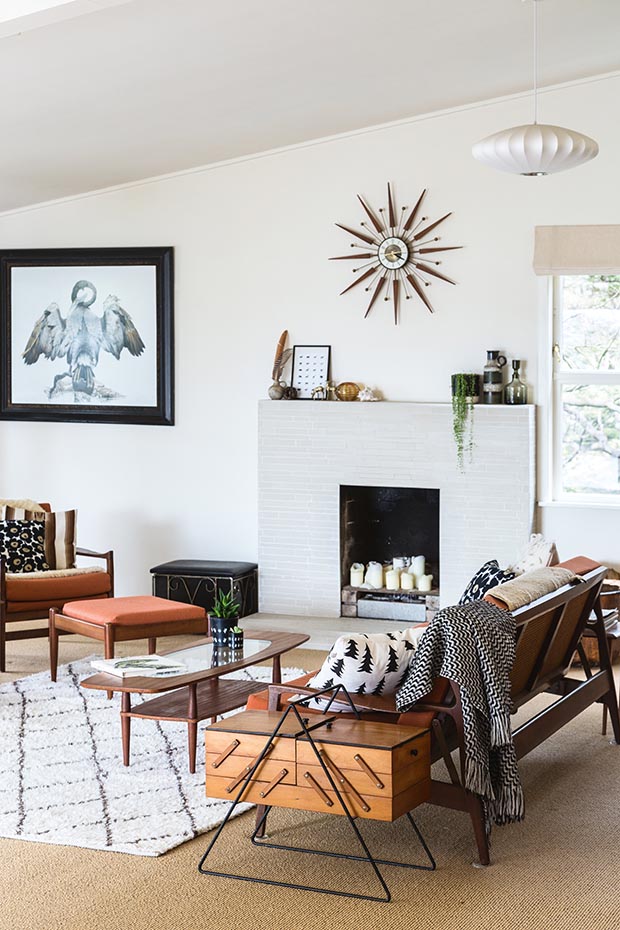
The drawing of a pied shag on the wall is by Niels, who bought the frame from a flea market in Germany. The black and white wool wrap on the sofa is from Deborah’s autumn/winter 2015 range, while the fold-out sewing table was a Trade Me find.
“My father was a pharmacist but outside of work he was a passionate lepidopterist whose love of nature inspired me to draw the flora and fauna that surround me.”
After a degree in graphic design at the University of Hannover, Niels won a place at London’s prestigious Central St Martins to do a masters in communication design. It didn’t take long for his artistic ship to come in; the freelance world beckoned, along with blue-chip clients such as MTV and the Body Shop. Later there was his own company, which specialized in corporate identities.
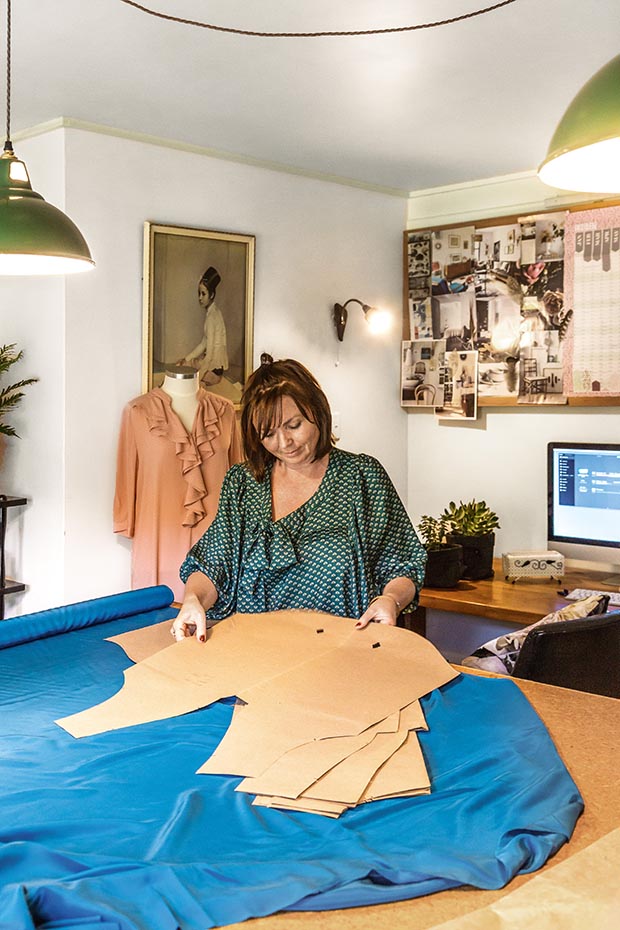
Fashion designer Deborah Sweeney.
Things were going Niels’ way and one Friday night in 2000 he was supposed to meet friends for a drink in Islington. But it was wet, he was cycling and halfway there he almost turned around.
Fortunately, some mysterious force propelled him forward because that was the night he met Christchurch-born Deborah, then working as a pattern cutter with a friend of his.
Deborah, for her part, didn’t really need a tall, blonde German complicating her life. It was already complicated enough: her British work visa was running out and, as much as she loved traveling, the award-winning designer, who studied fashion design in Wellington, missed home.
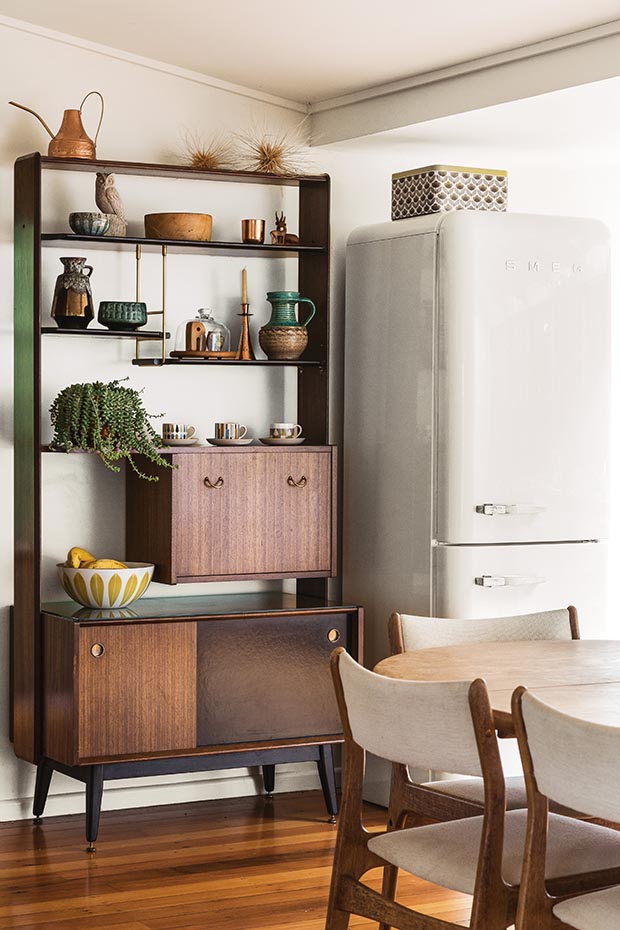
“The cottage is believed to have been one of the first buildings in Days Bay,” says Deborah. “It used to be a tearoom and people would climb up the hill to have a cuppa and a scone”.
“I’d spent a year in New York working for high-end fashion designer Jill Stuart and three and a half years in London with the company who supplied clothing to stores such as Topshop and H&M. Every time I came back to New Zealand for a visit, I wanted to stay.”
So she packed up her fledgling label, which specializes in casual and tailored clothes, and flew home followed by her beau a few months later.
“I had a job lined up at Saatchi in Sydney and had no intention of staying here,” Niels recalls.
But he fell in love with New Zealand with a crash that could be heard from space and, 15 years and two children down the track, has no intention of leaving.
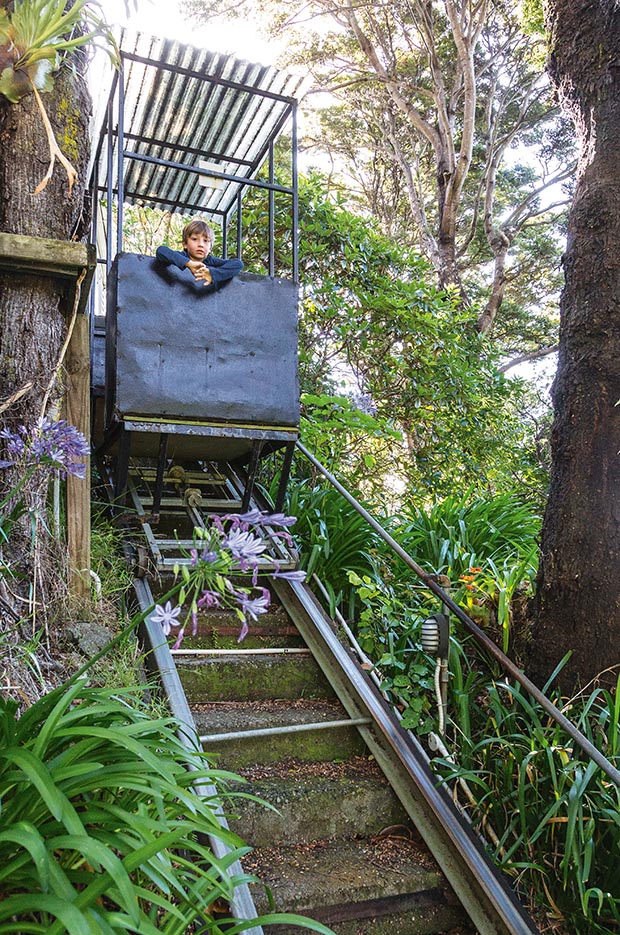
The cable car to the hillside home Niels shares with his wife, fashion designer Deborah Sweeney, and their sons Lars (7) and Romeo (3).
Fanning his love affair were the native birds that flitted around his home.
“The first time I ever saw a tui, I was astounded. I took a photo of it and then spent weeks drawing it, trying to get the colours right.”
By day Niels worked as a graphic designer, first for a Wellington design agency and for the past 12 years for his wife’s company where he’s in charge of marketing, photography and managing the website. But drawing was always nibbling at the edges. A meeting with publisher Robbie Burton sowed the seeds for a 160-page book about native New Zealand birds.
Although the deadline was roughly set at two years, those two years turned into six.
“Juggling a day job, young children and drawing can delay things a bit,” he says with understatement.
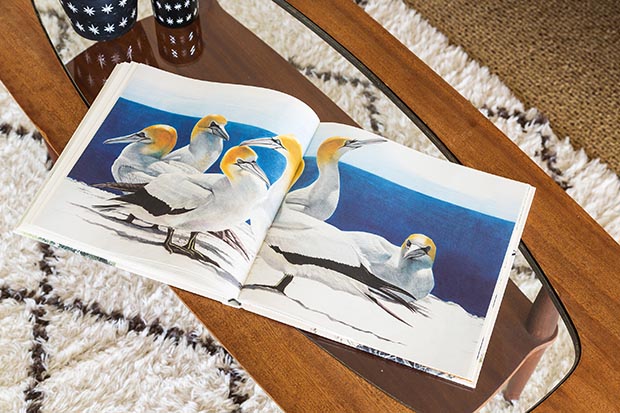
“Drawing birds can be tricky because they don’t generally sit still long enough for an artist to end up with usable results. Taking photos helps and I usually do most of my sketching from them”.
Land of Birds was finally published in late 2014 and since then Niels has devoted more time to exhibiting his work in Wellington and Auckland. Deborah has also decided to take a year out from the fashion business, freeing up both their schedules.
“We’ll still do online sales but I want a year to spend with Romeo before he goes to school and Niels wants to focus full time on his art,” she says.
That includes another book, this time concentrating on making the ordinary – such as spiders and butterflies – extraordinary.
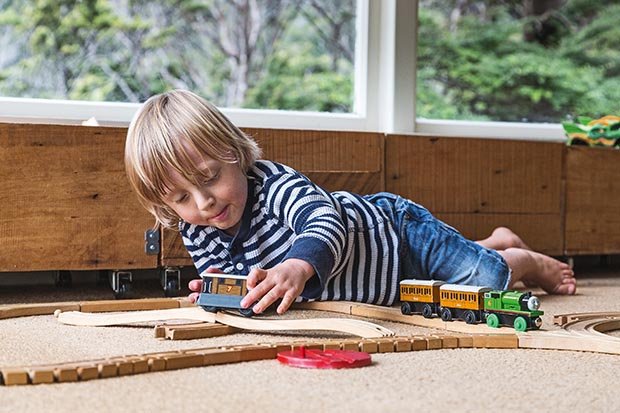
“We don’t tend to notice common, everyday things as much as we should,” he says. “But if you look long enough you can find beauty in anything.”
That’s not to say Niels will be giving up birds, with exhibitions planned for Auckland and Wellington later this year. But don’t ask him to pick a favourite. “They’re all incredible in their own right,” he says.
“Our native birds are critical to New Zealand’s identity and I believe we have a moral obligation to look after them to ensure they are here for the next generation. Without them, New Zealand would just be another grassy patch in the ocean.”
AT THE BAY
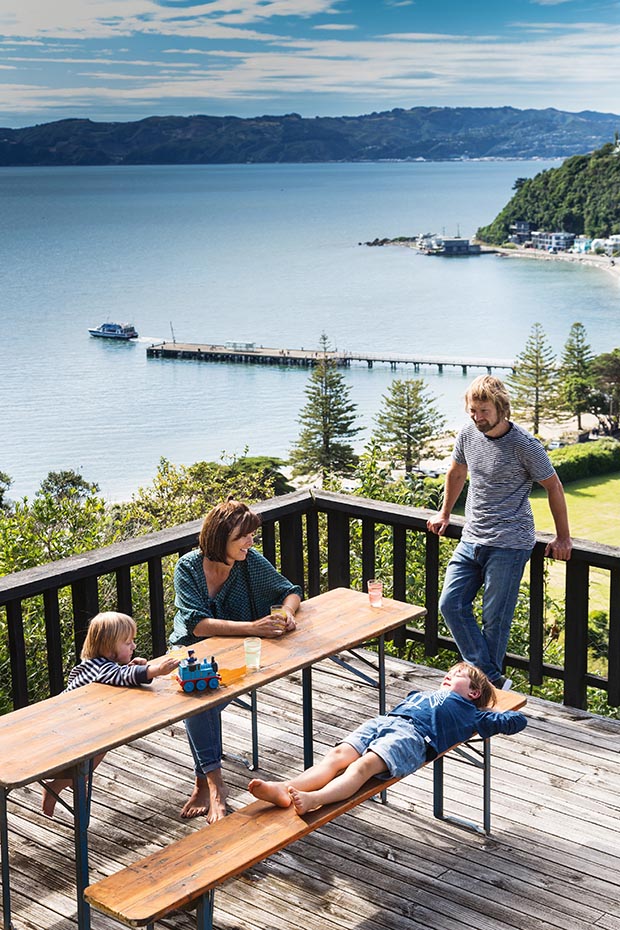
Niels, Deborah and their two children Lars (7) and Romeo (3) spend a lot of time in
summer on the deck, which looks out over Days Bay. The vintage German trestle table andbenches came from The Vitrine in Auckland.
Back in the 1800s, Eastbourne was dotted with baches where well-heeled Wellingtonians came to escape the city for the weekend.
Back then poor road access meant they traveled by boat. One of Eastbourne’s seven small bays, Days Bay was originally known as Hawtrey Bay and was settled by George Day whose family immigrated from Kent in 1841.
In the 1890s Wellington ship owner J.H. Williams provided the steamboats that brought 3000 to 5000 visitors a day to a resort he’d built for the “blazer, frock and tea-flask brigade”. It’s possible some of those visitors walked up the hill to sip tea on the deck of Niels’ office.
In 1914, less than 12 months before J.H. Williams died, his mother gave a large sum of money to help Wellington City Council buy the Days Bay resort from a subsequent owner for public use. Later renamed Williams Park, the wide slash of green in the heart of Days Bay has hardly changed despite the passing of more than a century,
Days Bay was also where Katherine Mansfield’s parents had a waterfront home, which proved the inspiration for her story At the Bay:
“Very early morning. The sun was not yet risen, and the whole of Crescent Bay was hidden under a white sea mist. The big bush-covered hills at the back were smothered. You could not see where they ended and the paddocks and bungalows began.”
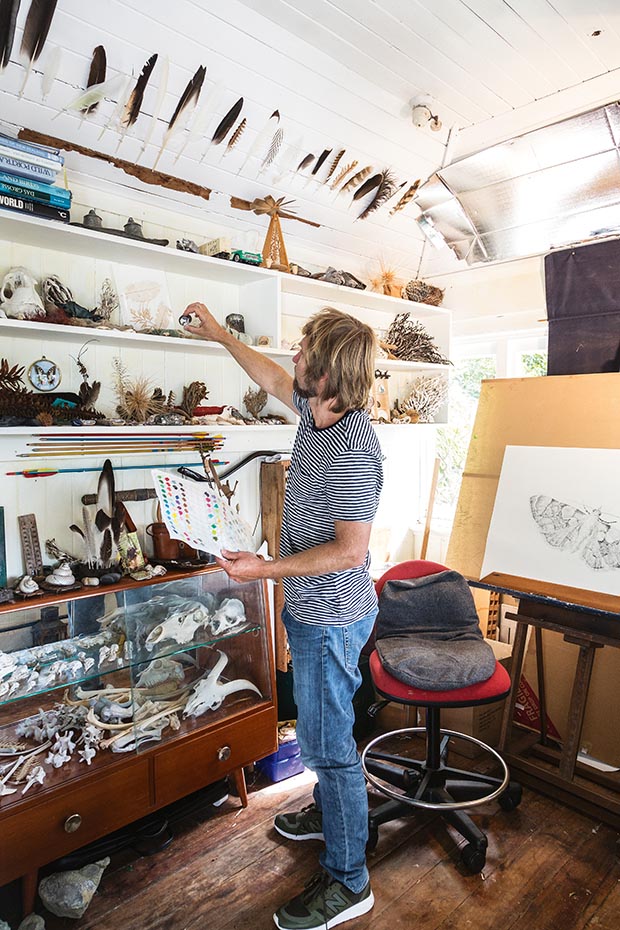
BIRD CAPTURE
“Drawing birds can be tricky because they don’t generally sit still long enough for an artist to end up with usable results. Taking photos helps and I usually do most of my sketching from them.
“The first step is to draw a light outline of the entire composition with a graphite pencil. Once I’m happy with the composition I start shading with a black colour pencil.
“Coloured pencil can’t be erased so I have to be careful not to set anything in stone while I’m still developing my composition. As the shading progresses, I go darker and darker until I reach the darkest areas, which are as close to black as the medium allows.
- Neils’ first book Land of Birds features gannets and kingfishers.
- Various collectibles from bush and beach walks line the walls of Niels’ studio, which started life as a tearoom.
- Pencils are like watercolours: they’re transparent and will layer on top of each other to achieve the right tone.
“If I’m going to add colour, I start with lighter tones to soften the shadow site of my subject and enhance the 3D effect. Then I continue with the lightest colour and work into the darker tones. Pencils are like watercolours: they’re transparent and will layer on top of each other to achieve the right tone.
“Depending on the paper/medium type, coloured pencils tend to saturate the paper quickly which means that after a few layers, they start to smudge and wear down the paper. That’s not the effect I’m after so my objective is to use as few colours as necessary to create as many tones as needed.” nielsmw.com
Love this story? Subscribe now!
 This article first appeared in NZ Life & Leisure Magazine.
This article first appeared in NZ Life & Leisure Magazine.
